
Strategic Content Marketing for SaaS Acquisition: Guide

by
Wiktoria Slowikowska
Nov 20, 2024
Identify and convert your most valuable users
Sign Up
Acquiring users is a strategic process that focuses on attracting the right audience, educating them about your product, and guiding them through the decision-making journey. Unlike traditional products, SaaS solutions often involve a recurring subscription model, meaning that long-term success hinges on building trust and delivering value from the outset. This is where content marketing emerges as a game-changer.
Content marketing serves as the foundation for educating, engaging, and converting potential users by offering value-driven, actionable insights that align with their needs. It’s not about hard-selling but about solving problems, answering questions, and positioning your SaaS product as the ideal solution. In this guide, we’ll explore in detail how content marketing plays a pivotal role in SaaS user acquisition, unraveling strategies, approaches, and practical applications to drive growth.
Why Content Marketing Matters for SaaS
In a crowded SaaS marketplace, where users are bombarded with countless options, content marketing sets you apart by helping you communicate value and establish trust. Let’s explore the critical reasons why content marketing is essential for SaaS user acquisition.
1. Educating Potential Users
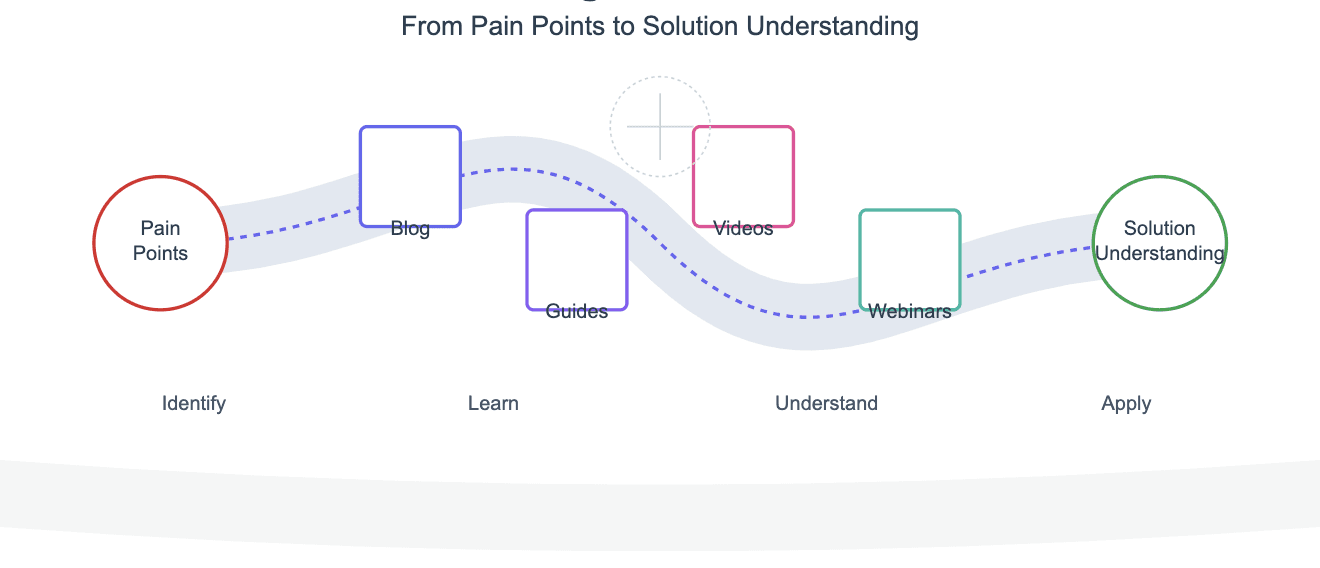
SaaS products often solve specific and sometimes complex problems. The learning curve for understanding how your solution fits into a potential customer’s life can be steep. Through well-crafted content, you can simplify this journey. Blog posts, guides, videos, and webinars help your audience understand the problem you solve and how your product addresses their pain points effectively.
For instance, if you’re offering a project management tool, content such as “How to Streamline Remote Team Collaboration” educates users about key challenges while positioning your product as the solution. By addressing pain points early on, content builds a natural bridge between awareness and consideration.
2. Building Trust Through Authority

SaaS users are careful decision-makers. They’re investing in tools that will shape their workflows, productivity, and success. Content marketing helps establish your credibility as an authority in your domain.
By consistently producing high-quality, informative content—such as thought leadership articles, industry reports, or technical whitepapers—you demonstrate expertise and create trust. When potential users view you as an expert, they are more likely to choose your product over competitors.
3. Attracting Organic Traffic
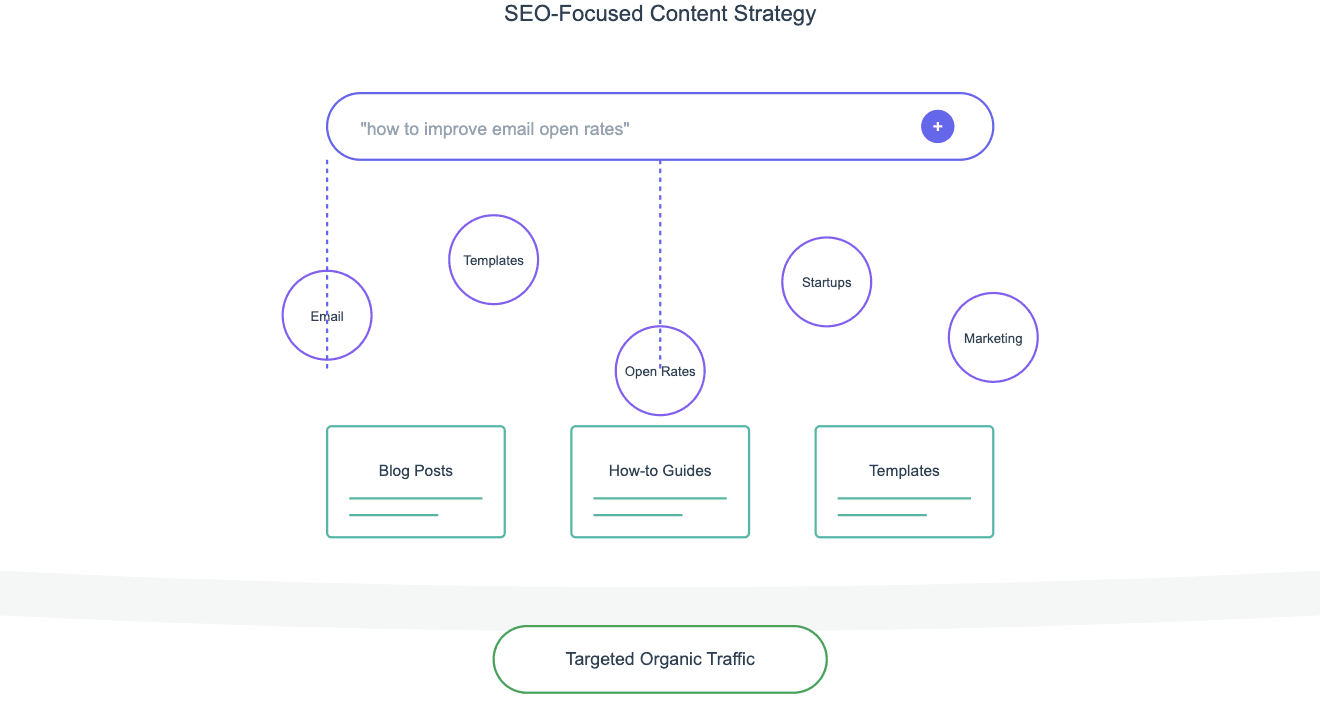
SEO-focused content marketing is one of the most cost-effective ways to bring users into your sales funnel. By optimizing content for keywords that reflect the challenges and needs of your target audience, you position yourself in front of users who are actively searching for solutions.
For example, if you offer an email marketing platform, targeting search terms like “how to improve email open rates” or “email templates for startups” ensures your content meets users exactly where they are in their search journey.
4. Guiding Users Through the Funnel
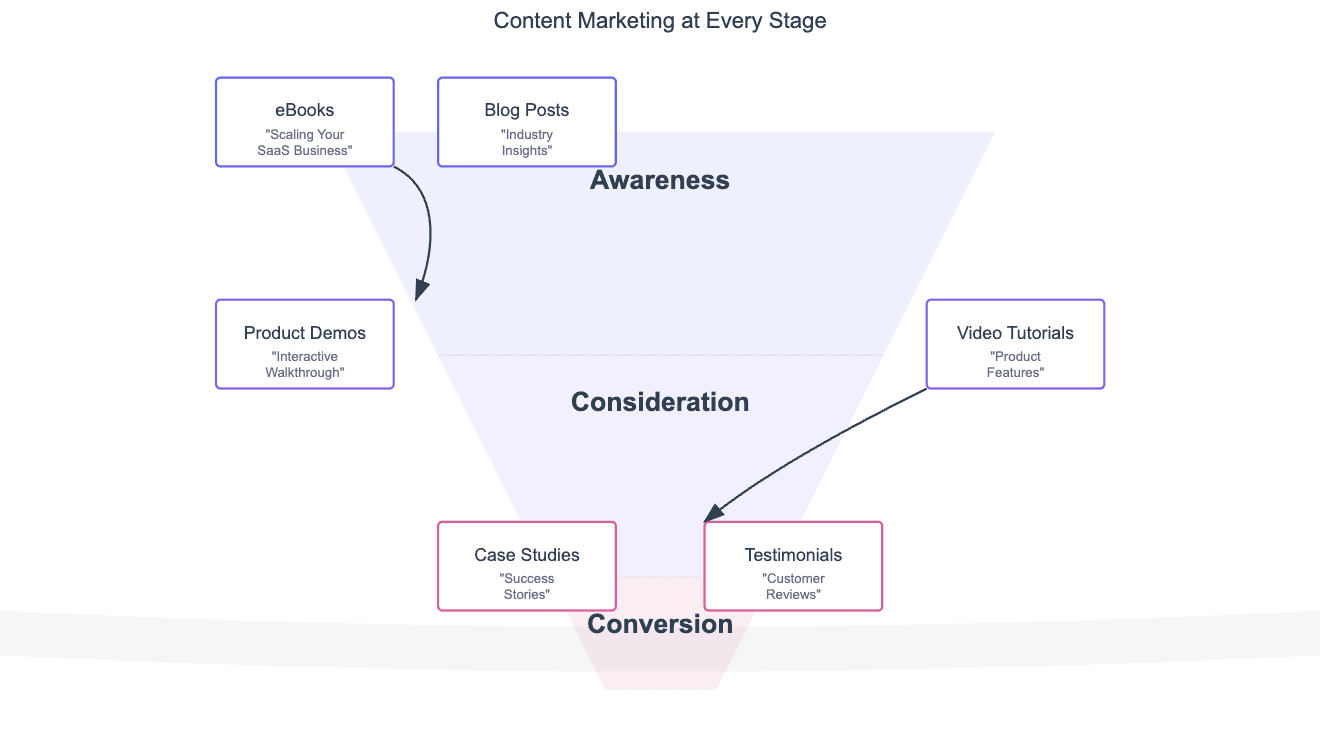
Content marketing doesn’t stop at awareness; it drives users deeper into the funnel. Educational blog posts, video tutorials, or interactive demos help users explore your product’s value. Case studies and customer testimonials then address objections and provide proof of success, moving them closer to conversion.
For example, a free eBook on “Scaling Your SaaS Business” can attract top-of-funnel leads, while a blog post titled “5 Ways Our CRM Boosts Sales Team Efficiency” targets users in the consideration phase.
Key Strategies for SaaS Content Marketing Success
Now that we understand the importance of content marketing, let’s delve into actionable strategies to maximize its impact on user acquisition.
SEO Optimization: Attracting the Right Audience
Search Engine Optimization (SEO) is foundational to any SaaS content marketing strategy. Why? Because it meets potential users right where they are—actively searching for solutions to their problems. Effective SEO ensures that your content surfaces on search engine results pages (SERPs) when your target audience looks for answers. This visibility translates into organic traffic, qualified leads, and ultimately, user acquisition. Let’s explore this in more detail and see how you can optimize your SEO efforts for maximum impact.
Why SEO Matters for SaaS
Unlike traditional products, SaaS tools often address very specific needs or workflows. The buying process typically begins with a question: How can I manage my team remotely? or What’s the best CRM for startups? These are precisely the moments where your SaaS product can shine—if your content is optimized to answer those questions.
The beauty of SEO lies in its ability to drive sustained, long-term traffic without the recurring costs of paid ads. Once you’ve secured a top ranking for a high-value keyword, that content continues to deliver leads over time. However, getting SEO right requires a strategic approach, especially in the competitive SaaS space.
How to Get SEO Right for SaaS Content
1. Conduct Thorough Keyword Research
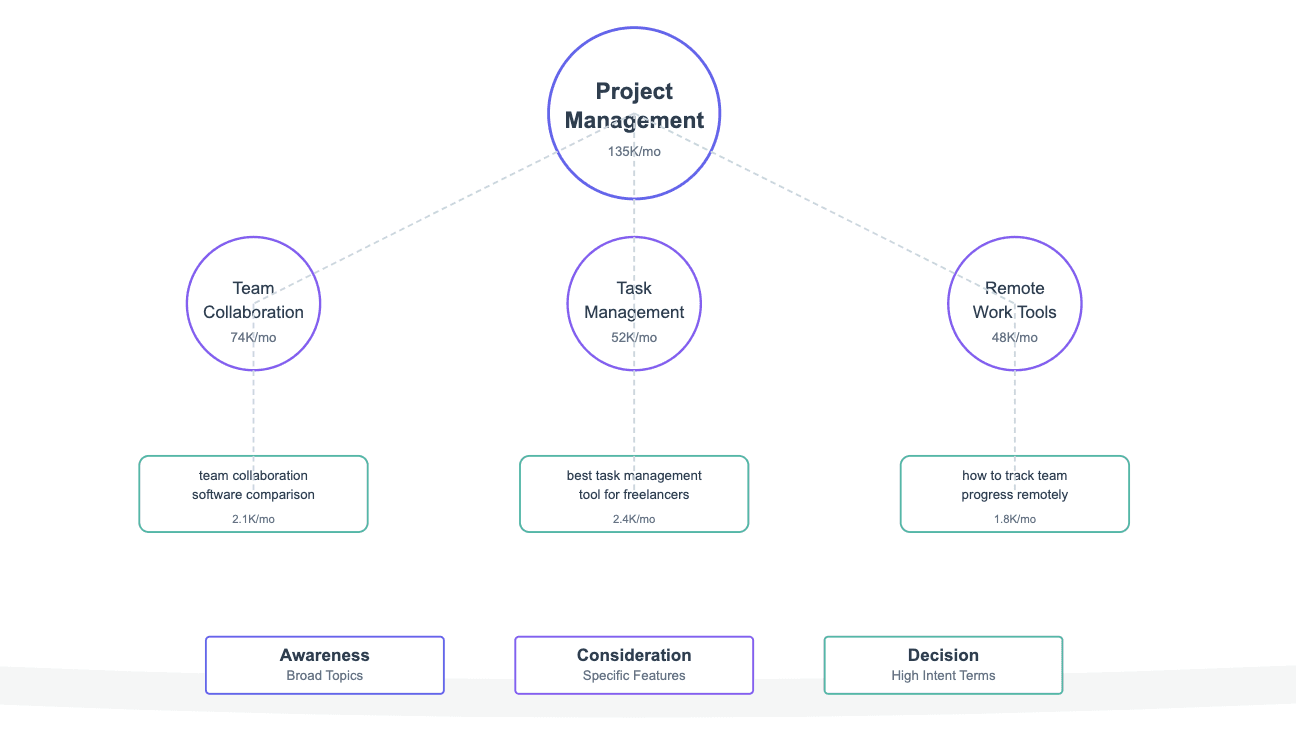
Keyword research is the foundation of any SEO strategy. It involves identifying the terms and phrases your potential users are searching for. Use tools like Ahrefs, SEMrush, or Google Keyword Planner to uncover these search terms.
Start Broad: Begin with general topics relevant to your SaaS product. For instance, if you offer project management software, your broad topics might include "team collaboration," "task management," or "remote work tools."
Drill Down to Specific Keywords: Focus on terms with lower competition but high intent, such as "best task management tool for freelancers" or "how to track team progress remotely."
Look at User Intent: Consider whether users searching for a keyword are in the awareness, consideration, or decision stage. Targeting keywords that align with their intent ensures your content resonates with them at the right time.
For example, a SaaS company offering customer support tools might prioritize keywords like:
Awareness Stage: "What is customer support software?"
Consideration Stage: "Top features of helpdesk software."
Decision Stage: "Best helpdesk software for small businesses."
2. Prioritize Answering Search Intent
Search intent refers to the why behind a user’s query. Are they looking for information? Comparing products? Ready to purchase? Understanding the purpose of a search allows you to create content that directly addresses their needs.
Informational Intent: Create in-depth guides or blog posts. For instance, "How to improve customer support response times."
Navigational Intent: Optimize landing pages for branded searches like "Your Product Name demo."
Transactional Intent: Develop comparison pages or pricing breakdowns, such as "Product X vs. Product Y: Which is better?"
Google values content that satisfies intent and rewards it with higher rankings. Use your content to solve problems clearly, concisely, and in a user-friendly format.
3. Focus on Long-Tail Keywords
Long-tail keywords are longer, more specific search queries. While they may have lower search volume than broad keywords, they often attract highly qualified leads. For SaaS, where users seek tailored solutions, long-tail keywords are gold.
Consider the difference between:
Broad Keyword: “CRM software” – High competition, low specificity, harder to rank for.
Long-Tail Keyword: “CRM software for small law firms” – Lower competition, clear intent, easier to rank for.
By targeting long-tail keywords, you reduce competition and connect with users who are more likely to convert because their needs are clearly aligned with your offering.
4. Optimize Your On-Page Content
Once you’ve identified the right keywords, ensure your content is optimized to rank for them. On-page SEO involves structuring your content in a way that search engines can easily understand.
Best Practices for On-Page Optimization:
Use Keywords Strategically: Include your primary keyword in the title, headings, URL, and meta description. Avoid overstuffing—it should feel natural.
Write Engaging Headlines: Titles like “5 Ways to Boost Your Team’s Productivity with [Your SaaS Product]” not only include keywords but also pique interest.
Add Subheadings: Break your content into digestible sections using subheadings that incorporate keywords.
Include Internal Links: Link to other relevant pages on your website to keep users engaged and signal topic relevance to search engines.
Leverage Multimedia: Use images, infographics, or videos to enrich your content and boost engagement.
5. Regularly Publish High-Quality Content
Consistency matters in SEO. Regularly publishing high-value content keeps your site fresh in the eyes of search engines and provides more opportunities to rank for different keywords.
Types of content to consider:
How-To Guides: Solve specific problems for your users. Example: "How to Automate Invoice Management with SaaS Tools."
Listicles: Curate helpful resources, like "10 Best Email Marketing Strategies for Startups."
Industry Insights: Share data-backed reports or trends, such as "SaaS Industry Trends in 2024."
6. Build Backlinks for Credibility
Backlinks—links from other websites to yours—are a strong signal of authority to search engines. The more credible sites link to your content, the higher it’s likely to rank.
How to Build Backlinks:
Create Shareable Content: High-quality content, like research studies or original data, naturally attracts backlinks.
Guest Blogging: Write articles for industry blogs that link back to your site.
Outreach: Reach out to websites or influencers in your niche, asking them to link to your content if it adds value.
2. Lead Magnets: Capturing User Interest
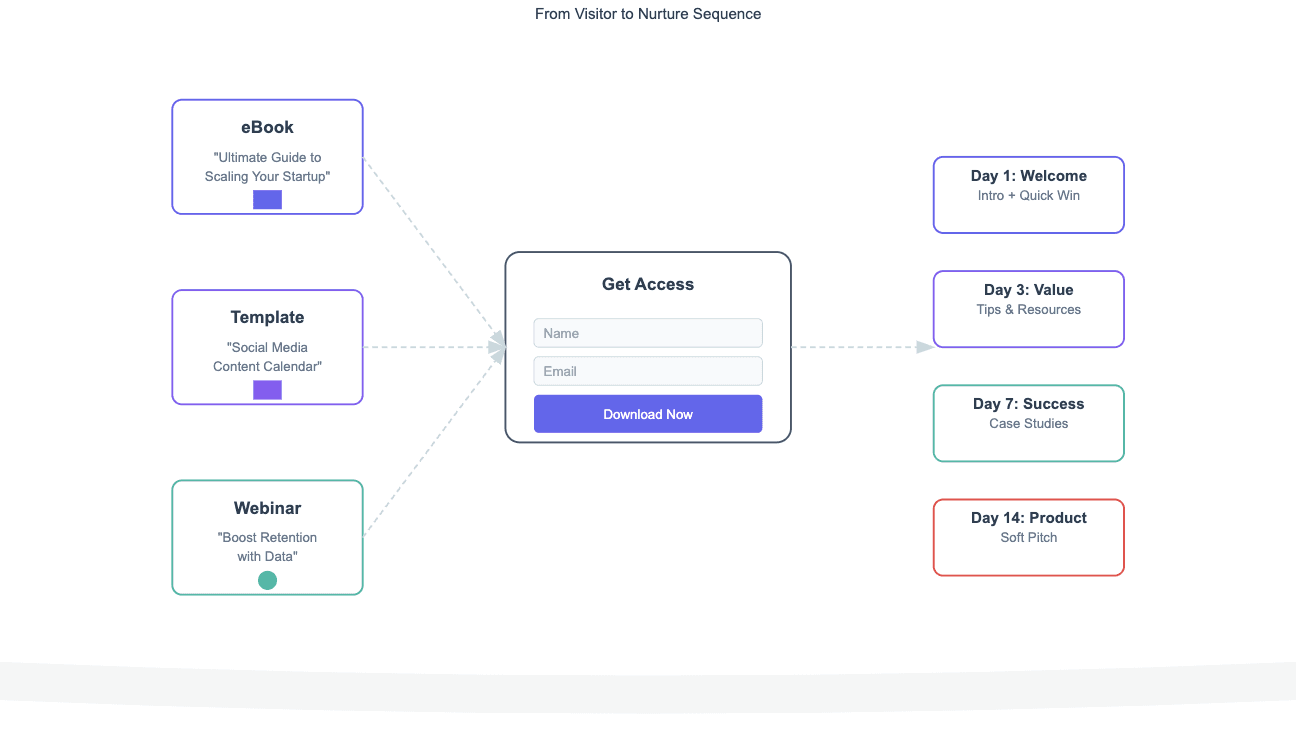
Lead magnets—such as eBooks, templates, or webinars—are powerful tools to convert website visitors into leads. They offer immediate value in exchange for contact information, enabling you to nurture these leads over time.
Examples of Effective Lead Magnets:
eBooks: “The Ultimate Guide to Scaling Your Startup.”
Templates: “Free Social Media Content Calendar Template.”
Webinars: “How to Boost Retention Rates with Data-Driven Strategies.”
Once users download a lead magnet, follow up with email sequences that provide additional value and guide them toward exploring your product.
3. Case Studies and Testimonials
Nothing builds trust like real-world proof of success. Case studies showcase how your product solves problems for other companies, while testimonials add authenticity to your claims.
How to Leverage Case Studies:
Focus on Results: Highlight measurable outcomes, such as “Increased Team Productivity by 30%.”
Tell a Story: Share the challenges, solutions, and outcomes in a narrative format.
Use Visuals: Graphs, screenshots, or quotes make case studies more engaging.
Position these assets strategically on your website or in sales collateral to influence decision-makers.
4. Video Content for Engagement

Videos are an engaging way to explain your SaaS product, especially if it involves complex features or workflows.
Types of Videos to Create:
Explainer Videos: Simplify what your product does in under two minutes.
Feature Walkthroughs: Highlight specific functionalities that solve common problems.
Success Stories: Showcase how customers use your product to achieve results.
Platforms like YouTube, LinkedIn, and your website are great places to share video content.
5. Social Media for Amplification
Social media amplifies the reach of your content and provides direct channels to engage with your audience. For SaaS, platforms like LinkedIn and Twitter are particularly effective.
SaaS Social Media Strategies:
Share Content: Regularly post blogs, guides, or tips.
Engage with Communities: Participate in industry discussions or groups.
Promote Events: Use social platforms to drive sign-ups for webinars or product launches.
Social media can also drive traffic to your website, where content like blog posts and case studies continue the user journey.
Measuring Content Marketing Success
Content marketing isn’t complete without measurement. Use analytics to assess what’s working and refine your strategy accordingly.
Key Metrics to Track:
Traffic: How many visitors does your content attract?
Engagement: Time on page, bounce rate, or social shares.
Leads: Number of users who sign up for free trials, demos, or lead magnets.
Conversions: How many leads turn into paying customers?
Tools like Google Analytics, HubSpot, or Heap can help track these metrics, providing insights to optimize your efforts.
Common Mistakes to Avoid
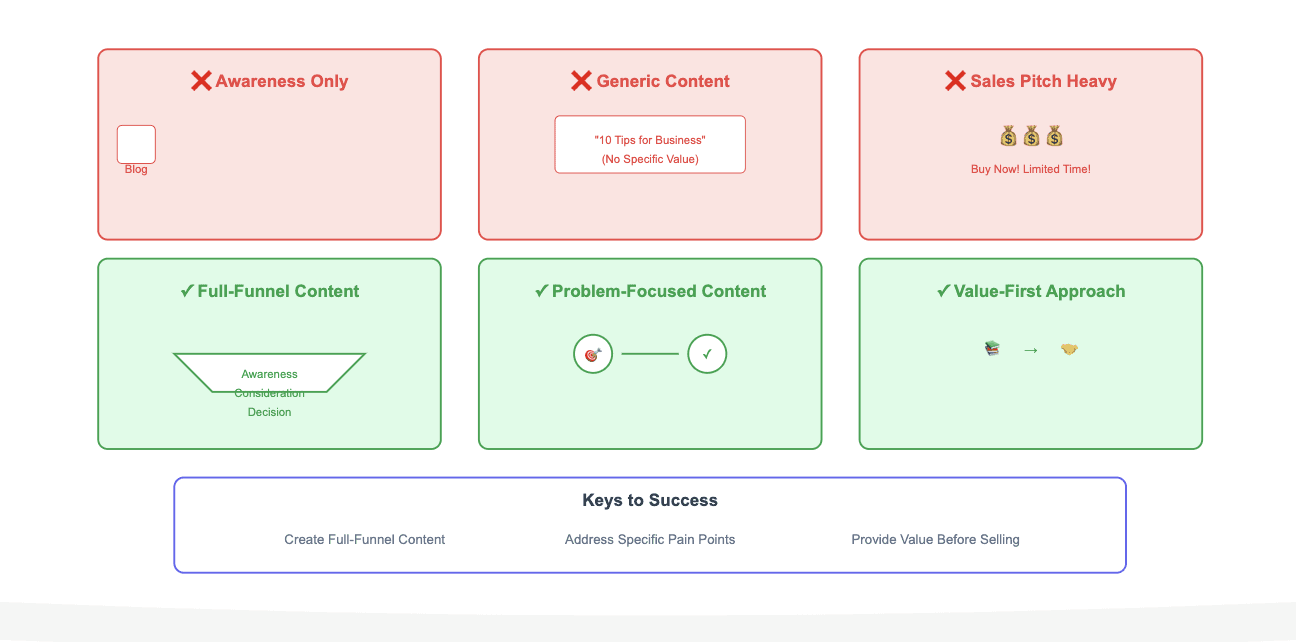
Even with the best intentions, content marketing can fall short if not executed correctly. Here are some pitfalls to avoid:
Focusing Only on Awareness: Don’t stop at attracting traffic; guide users through the funnel with deeper content.
Ignoring User Pain Points: Create content that directly addresses your audience’s challenges.
Overloading with Sales Pitches: Focus on providing value before making the hard sell.
Conclusion
Content marketing is a cornerstone of SaaS user acquisition, offering a sustainable way to attract, educate, and convert potential users. By crafting content that addresses pain points, builds trust, and guides users through the buying journey, SaaS businesses can not only acquire new customers but also nurture lasting relationships.
Invest in SEO, educational resources, videos, and data-driven case studies to stand out in the competitive SaaS market. The right content strategy ensures your brand is top-of-mind, your product is seen as the best solution, and your growth is consistently fueled by value-driven user acquisition.





